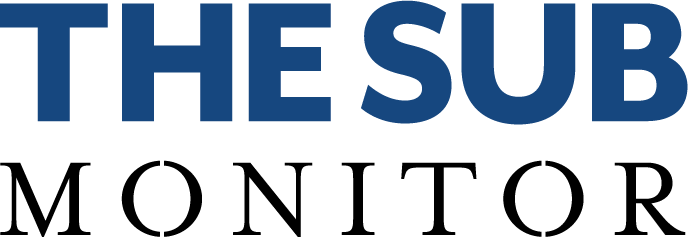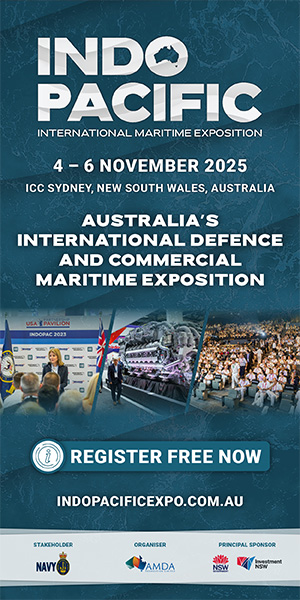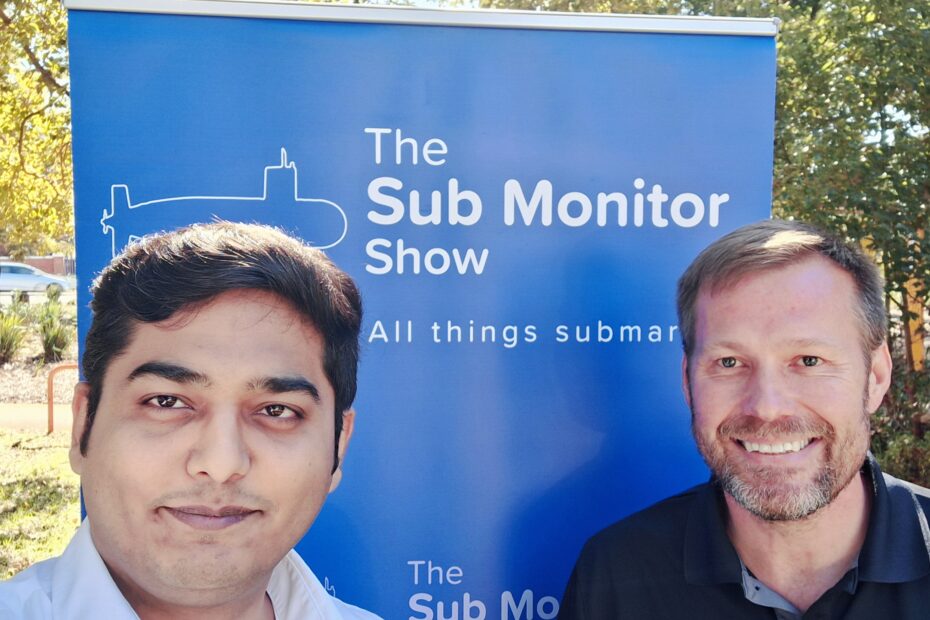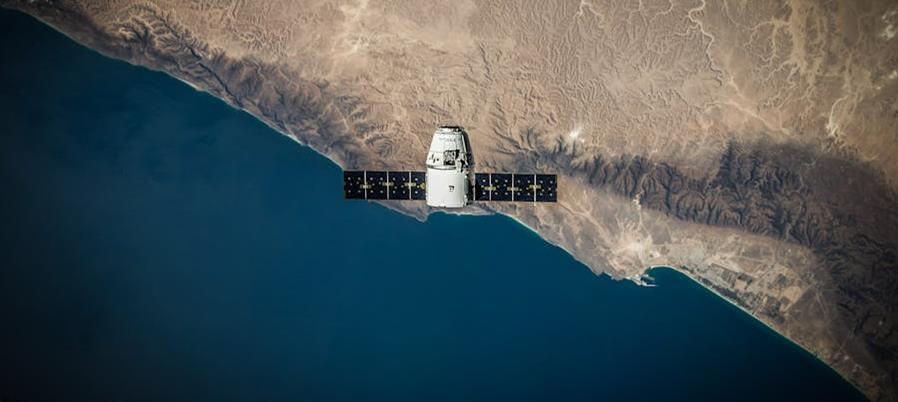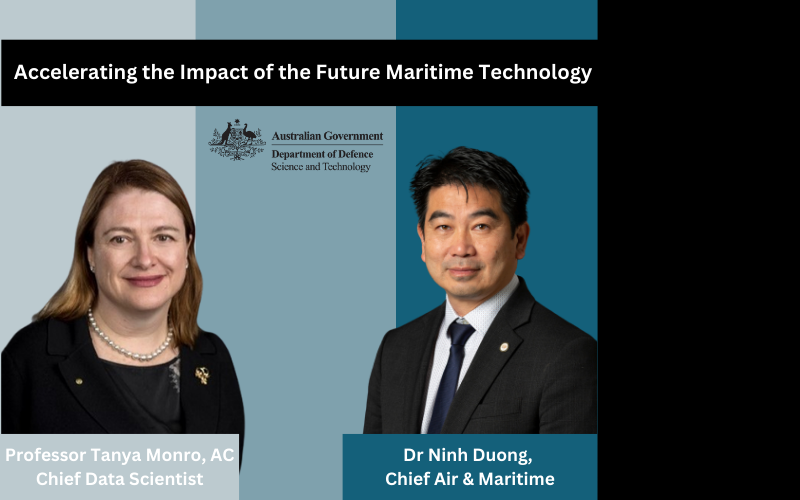UBH Group’s Chief Nuclear Officer Mark Schnider gave valuable insights during The Sub Monitor Show on 25 July 2025 in Perth, Western Australia.
Abhishek – Welcome to The Sub Monitor Show, Mark Schneider. Mark is a Chief Nuclear Officer at UBH Group. Mark is a former submariner who served in the US Navy. AUKUS is a multi-decade and multi-billion project, and it comes with strengths, weaknesses, opportunities and threats for its successful implementation and delivery. Before moving on to the actual questions, Mark, can you briefly introduce yourself to our audience please?
Mark – I served on a total of four nuclear-powered vessels, three submarines and one aircraft carrier. I started out as an enlisted Sailor and rose to the rank of Chief Petty Officer which is a third most senior rank in the US Navy. I was a nuclear electronics technician. I worked on the electronics that operate and maintain the nuclear reactors and was also qualified as a reactor operator to directly operate the reactor.
I commissioned in 2008, through the Nuclear Limited Duty Officer program. My first tour as a commissioned officer was with the US Navy’s regulator, Naval Nuclear Reactors. After my stint with Navy Reactors, I was assigned as the repair officer on board USS Abraham Lincoln. As a repair officer I had fifty sailors that worked for me that were expert machinists and welders. I also qualified to supervise the operations of the ship’s two nuclear reactors.
After my tour on Lincoln, I went back to the world of electronics as the first Reactor Controls Assistance assigned to the Pre-Commissioning Unit (PCU) Washington. While on PCU Washington. As a new construction vessel, we established all the programs for the vessel from the ground up that will support the vessel for its entire lifespan. My final tour with the US Navy was with the Supervisor of Shipbuilding, Conversion, and Repair, or SUPSHIP for short, at Newport News Shipbuilding. We provided oversight to all the contracts awarded to Newport News Shipbuilding. That is my US Navy career, and I retired in 2018 from the US Navy.
After retiring from the US Navy, I worked at Dominion Energy’s nuclear power station in southeast Virgina. I spent three years there before returning to government service as federal employee with the US Coast Guard. In November of 2024, I joined UBH Group as their inaugural Chief Nuclear Officer.
Abhishek – There are people in favour of AUKUS and those against it, as well as some just don’t know where they stand. Is it possible for you to explain what are the benefits for Australia from AUKUS? What are the strengths?
Mark – One of the major strengths that Australia has is that they are coming into this nuclear program and not like the way US and UK came to it in the middle of the last century. Australia is not coming to this blind unlike the US and UK. There are lessons already learned which Australia could follow. The additional strength is Australia’s Australian Naval Nuclear Power Safety Regulations (2025) and Australian Naval Nuclear Power Safety Act (2024) (or ANNPS Act 2024) which establishes an independent Australian Naval Nuclear Power Safety Regulator which will function as a kingpin to oversee the Australian Submarine Agency as they execute AUKUS program.
Per new law a licence is required to carry out any regulated activity in a designated zone such as Stirling designated zone (HMAS Stirling at Garden Island in Western Australia) or Osborne designated zone (Osborne Naval Shipyard in South Australia), there are stringent laws and regulations by Australia. To work under a licence there are strict requirements to follow per the law and new regulations. There are specific requirements to show compliance with the law for entities supporting the regulated work. Any “authorised person” supporting a licenced activity is obligated to follow these requirements. Failure to comply with these requirements can result in criminal and civil penalties.
The Australian Naval Nuclear Power Safety Regulator is telling Australians, British and Americans that this is an Australian program and the regulator have mandated international best practices be incorporated into licence applications. The regulator is telling boldly that it will implement these international best practices and not just incorporating the UK and US practices. While the US and UK naval nuclear programs have great safety records they have not incorporated many of the international best practices that other nuclear propulsion and power programs have incorporated.
Abhishek – What will be the challenges for the regulator to implement as they will face many obstacles?
Mark – The challenges for the regulator will be people not being able to contextualise the ANNPS Act 2024. When I read the contracts of the companies which are going to be the part of AUKUS, I see many times that there are some violations by not knowing the Act. I also get the impression that many of these companies are going to test the boundaries of the regulator. This act clearly defines certain action in relation to AUKUS as ‘regulated activities’ which are specifically categorised as material, submarine, and facility activities.
I encourage the regulator to exercise their statutory authority for those who violate the licence requirements and therefore the law. There is no excuse for entities to not know the requirements of the laws and regulations are. These requirements apply to any regulated activity even if it is performed by private companies or public entities and even if it is foreign company or domestic. Compliance with the licence is mandatory for all entities and any entity will need to adjust their management systems to incorporate the nuclear safety perspective which will be set in the Nuclear Safety Management System.
The challenge for the licence applicant is to ensure their Nuclear Safety Management Systems incorporate the international best practices not just base their systems on what the US or UK have done historically. Any person conducting a “regulated activity” per section 24 of the law will have to demonstrate compliance with the Nuclear Safety Management System. I don’t know if the entire submarine enterprise understands the depth that this impacts every level of work being performed.
Abhishek – Yes, indeed. Thanks for sharing your perspectives on the strengths and weaknesses. This is very interesting to know, and I hope our readers will now have understood that the nuclear safety management is stemming from the international best practices. The Sub Monitor is here to help our audience on this topic. Submarines are military weapons, and you can’t use them just the way you like.
Mark – Yes, you can’t just extend the life of a submarine because you want to. These Virgina Class submarines are not designed to be refuelled. When it is out of fuel, it is done. Same thing with the PWR 3 reactors, the reactors which will be installed in SSN-AUKUS. This is a transformational change in how submarines are sustained, decommissioned and disposed. Diesel-electric submarines can be cut up and recycled once the hazardous materials are removed. However, nuclear-powered submarines need a radioactive waste management plan to manage the disposal.
This management plan will have to incorporate storage of both low-level and high-level radioactive waste. While the low-level waste is below the equivalent medical radioactive waste levels and will decay in a few years to a couple of decades. Low-level waste still needs to be managed regardless of if it comes from medical facilities or naval nuclear propulsion. The small amount of high-level waste, about one wheely bin per submarine, will need to be managed for much longer as the material will contain both intermediate and high-level waste generated from the nuclear reactor.
ANSTO sends this material off to France for reprocessing to remove the high-level waste, which is a fancy term for nuclear fuel, and the intermediate waste is sent back to Australia for permanent storage. Due to the nature of the submarine nuclear fuel, the high-level cannot be reprocessed as that would be a violation of the international treaties based on enrichment or concentration of the nuclear fuel; therefore you must store it.
Abhishek – That is interesting! There is also a talk on low enrichment and high enrichment. Please can you help our audience to understand this in a nutshell?
Mark – When we are talking about the enrichment, we are taking about the concentration of Uranium 235 and the overall of amount of Uranium in the fuel. There are several isotopes of Uranium, but we simply talk about U235 and U238. Anything greater than 20% is considered as a highly enriched uranium. Anything below 20% is considered low enrichment. Weapons grade Uranium is according to public sources is anything more than 90% enrichment. While I cannot tell you what the enrichment level the US or UK use in their submarine reactor cores, the very design of the fuel would prevent that material from being about to meet the necessary states required for weapons.
Weapons require the fuel to be in solid metal form to meet those conductions. Nuclear fuel is made of a fine powered oxide that prevents the atoms from even getting close enough at the subatomic level to achieve the conditions necessary for weapon program and the nuclear reactors lack the necessary chemical explosives that every nuclear weapon requires.
An analogy to describe what my technical statements mean. If the weapons grade Uranium is flour used for baking, it would have to be assembled in a manner that is useful, in this instance let’s say it is a loaf of sandwich bread. The nuclear reactors that the US and UK is giving you would be the akin to chocolate chip cookies. I have yet to see anyone who would be able to unbake flour.
The analogy breaks down in the reverse direction as is actually very easy to convert a weapons grade Uranium into fuel for a nuclear reactor. From a non-proliferation perspective, the US has procured most of Russia’s weapons grade Uranium and now being consumed in its nuclear reactors. The US is literally consuming nuclear weapons to power the nation.
Abhishek – When you say that there is a likely violation of the international companies while they join AUKUS supply chain by not abiding to the ANNPS Act 2024. What role UBH Group is going to play to prevent this happening by helping these companies?
Mark – Because UBH Group is an ISO 19443 certified company, any contract our customers bring to our attention, we must tell them what work they can or can’t do by checking their compliance in relation to the Act. Even if these companies meet the legal requirements stipulated by their own home country, that doesn’t mean they automatically qualify to join Australian submarine supply chain unless they follow the Act, regulations, and licence.
While compliance with US, UK, or other nuclear management systems will give them an edge over their competition, they know they must comply with the requirements of where they are working. US companies that work inside of the different nuclear shipyards in the US all know that each shipyard has their own requirements for access and how to behave inside them even though they are similar. I have experienced this firsthand and would often have to adjust how I complied based on being in different shipyards between the morning and afternoon.
Abhishek – Then this makes very complicated. Do you think, Australia is much better in this aspect?
Mark – Yes, indeed. There are multiple regulators in the US, and I have had up to three independent nuclear regulators on board one nuclear vessel based on the different oversight requirements. Australia has done a great job using designated zones. Inside those designated zones the Australian Naval Nuclear Power Safety Regulator is the sole nuclear regulator. This makes for a more complex set of requirements on the regulator, but for the personnel inside the designated zones this makes the requirements more standardised and easier to comply with.
Abhishek – Why international companies are reluctant to follow the ISO 19443 certification?
Mark – I believe that many international companies are under the impression that they are meeting the requirements of the ANNPS Act 2024 because they are meeting the US and UK supply chain standards. Additionally, the regulator has not mandated ISO 19443 and it is not going to mandate it as that is not the regulator’s role. However, every word in ISO 19443 is mandated through part 31 of the law and part 20 of the regulations as it incorporates the international best practice when it comes to nuclear supply chain. Specifically, the Nuclear Safety Management System will have to incorporate a supply management program.
While ISO 9001, which is the basis of ISO 19443 from a quality management system perspective is quite easy to obtain, ISO 19443 requires specific nuclear safety aspects that no other international standard covers. There are only two ways to show the compliance to the regulator. This will be either to have an ISO 19443 certification or to have a letter of compliance from an ISO 19443 certified company. UBH Group is the only company that currently has the ISO 19443 certification in Australia.
Abhishek – What are the opportunities for the Australian companies and for the regulator?
Mark – The US and UK have been doing this for long time. Australia doesn’t have that same level of experience. AUKUS offers an opportunity for the regulator to build its credibility by enforcing the laws and regulations made for Australia on these international companies. This enforces sovereign capacities for Australia. For example, a maintenance plan for a submarine starts months or years before it gets implemented. So, before the commencement date of the contract, there is a need to have a licence so that these companies can conduct the maintenance.
I also foresee many opportunities for Australian companies to partner with US and UK companies to import and export capabilities. While Australia is new to this, these systems are very Australian, and foreign companies will need to have partnerships with experts on how Australia thinks and operates.
With regards to export, as Australian companies develop these systems, they will be able to test the existing systems of the US and UK which often have a few companies that are grandfathered under old systems because domestic companies felt it was too hard to comply with the updated programs. Meanwhile Australian companies haven’t experienced these system upgrades as it is all new to them and adding US and UK supply compliance on top of Australian requirements will just be a part of day-to-day operations.
Abhishek – What do you think about the workforce who is willing to participate in AUKUS? This is one of the threats to the AUKUS nuclear program and shortages on talent and having a skilled workforce will be a long-term challenge. How do you see to this problem?
Mark – That’s a serious challenge. This is not going to change. If you are going to have access to the nuclear technology and material compliance with various US and UK laws will be mandatory for that to occur. It took a lot to amend the US laws to transfer the technology to the UK so they can build their first nuclear submarine HMS Dreadnaught in 1960s. Fortunately, AUKUS is not a new thing. It is an extension of what happened to the UK and now it is happening to Australia after several decades.
Abhishek – How the US and UK citizens can join AUKUS in Australia in your opinion? How about they want to raise their hands to join AUKUS in Adelaide or Perth and what will be the mechanism for helping them to join?
Mark – I think, there is way if all the three nations’ departments of the state can come together. I believe there is an opportunity to develop an AUKUS specific passport so that the nuclear personnel from the US, UK, and Australia can travel freely by linking their security clearances to their passports. Right now, there is a challenge to come here as a US citizen.
The other challenge is related to an information transfer. I built a nuclear social licence training program in which I based the information on the AP1000 commercial nuclear reactor, which the US has exported to China. This is a nice work around to meet US export control requirements. It also may be concerning to Australians who may think I am trying to promote commercial nuclear energy on them. I am not; I just don’t want to go to prison in the US for violating US information export laws.
Abhishek – We need motivated workforce for AUKUS. What will be your message for young Australians?
Mark – I can speak from the mining perspective. The FIFO program is hard on the mining workforce and their families. Workers supporting AUKUS will come home most every day as the work will be in areas that many already live.
There is also something about working in the defence space. You are defending your nation without necessarily picking up a rifle and deploying. Nuclear vessels are built and maintained very differently from the non-nuclear ones. Nuclear vessels are manned by sailors well before they are finished. I have worked side-by-side with shipyard workers to the point where we would have parties and invite them to join us.
There is a pride amongst the shipyard tradies in the US when it comes to building and maintaining these vessels. They are proud of the work they perform and often get excited to show us as Sailors the great work they are doing. We don’t just hand the work over to them to do and they hand it back when finished. We are team that works together like a close-knit family.
Abhishek – Thank you so much for your time, Mark and it was my pleasure to have you for The Sub Monitor Show. I really enjoyed the conversation and the way you explained the strengths, opportunities, threats and opportunities offered by AUKUS program.

